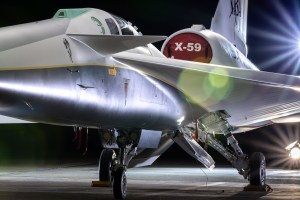Expedition 67 began in March 2022 and ends in September 2022. This expedition will include research investigations focused on biology, Earth science, human research, physical sciences and technology development, providing the foundation for continuing human spaceflight beyond low-Earth orbit to the Moon and Mars. Expedition 67 includes NASA’s SpaceX Crew-3 astronauts Tom Marshburn, Raja Chari, Kayla Barron, and ESA(European Space Agency) astronaut Matthias Maurer, who also were part of Expedition 66.
Human Immune System Study
Microgravity causes changes in human immune cells that resemble aging, but happen faster than actual aging. Immunosenescence studies the effects of microgravity on cells involved in tissue regeneration and whether recovery occurs post-flight. Understanding whether and how the immune system recovers after return to Earth could support development of treatments to protect astronauts during future long duration spaceflight. Results could provide insight into whether effects of the biological aging process can be reversed.
Earth Surface Mineral Dust Source Investigation
When strong winds on one continent stir up mineral rock dust, the airborne particles can travel thousands of miles to affect entirely different continents. Dust suspended in the air can heat or cool the atmosphere and Earth’s surface. This heating or cooling effect is the focus of NASA’s Earth Surface Mineral Dust Source Investigation mission. Data collected by the experiment will allow scientists to create a new mineral map of Earth’s dust-producing regions. The map will improve computer models that scientists will use to assess the regional and global heating and cooling effects of mineral dust today and in the future.
Biopolymer Research for In-Situ Capabilities
Biopolymer Research for In-Situ Capabilities looks at how microgravity affects the process of creating biopolymer soil composite, a concrete alternative made with on-site organic material such as lunar or Martian dust. Using resources available on site for construction on other planetary bodies reduces the need to take along materials, lowering cost and freeing up space on long-term missions. This process also offers an environmentally friendly concrete alternative for making structures on Earth. Cylindrical bricks are made aboard the space station and returned to Earth where their composition is analyzed.
Sutur in Space
As humans travel farther from our home planet, we need to prepare for medical emergencies occurring where there are no hospitals. The Suture in Space experiment will look at how tissues heal in weightlessness. Living tissue from biopsies will be cut and sewn back together, before being sent to space where astronauts will activate the cells to monitor the healing mechanisms. The samples will be frozen at set times to track how they progressed in space.
rHEALTH ONE Microgravity Demonstration
There are unique challenges for monitoring crew health on deep-space exploration missions, including limited space for medical devices and the inability to return samples to Earth for analysis. The rHEALTH ONE Microgravity Demonstration investigation tests a modified, commercial off-the-shelf device that could be considered to determine the presence of medical conditions on future exploration missions. The technology could also provide timely, cost-effective, reliable, and convenient diagnostic tests for patients on Earth without access to robust health care infrastructure.
The Mission Patch
The Expedition 67 patch celebrates our on-going international mission to conduct science and research to improve life on Earth and extend our presence in the solar system. The International Space Station is poised in the foreground to recognize the contributions of the thousands of engineers, scientists, researchers, trainers, fabricators, leaders, and dreamers who have made this miracle of engineering and sustained operations possible. Our beautiful home, the planet Earth, serves as a central element of the patch, just as it is central to the space station’s mission. While we endeavor to unlock the mysteries of the universe, we are also committed to better understanding the Earth and how we can protect it for future generations. Three stars shine bright on a field of black, representing the United States, Russia, and Italy, the three countries with crewmembers on this particular expedition. The numerous stars further scattered across the night sky represent the additional countries that comprise the space station’s partnership. The life-giving rays of the sun represent our crew’s families, whose love and support make this endeavor possible.





































